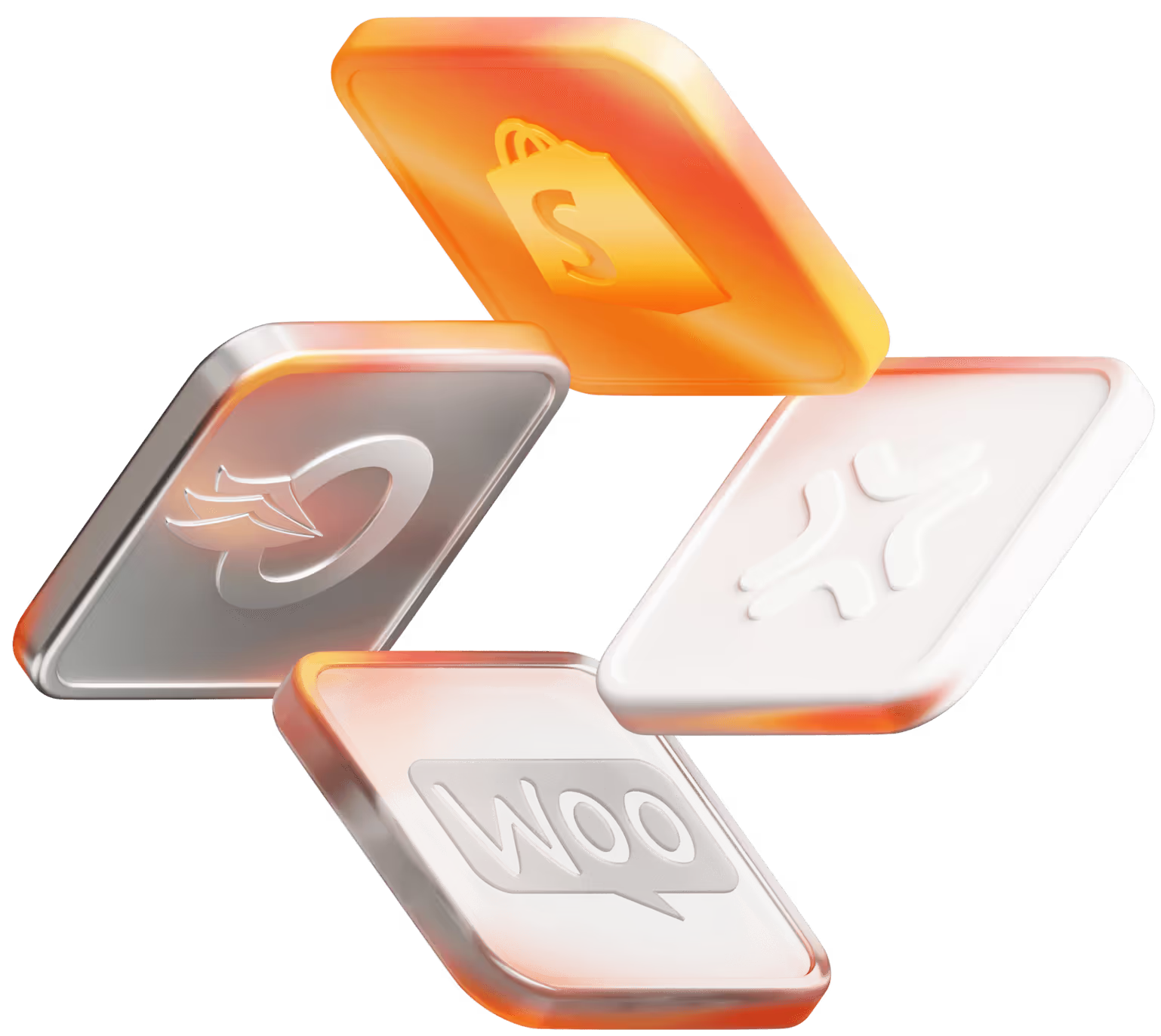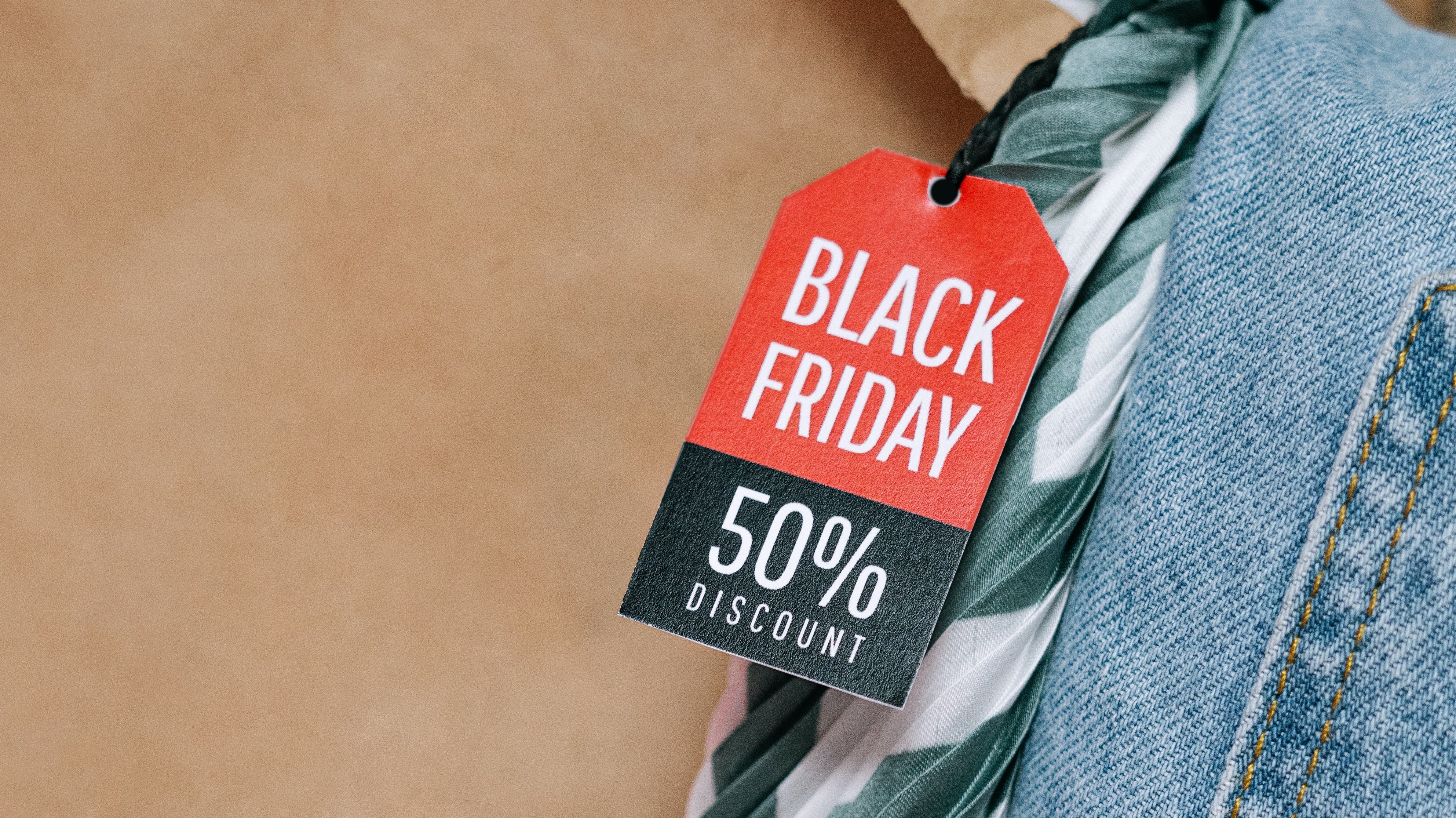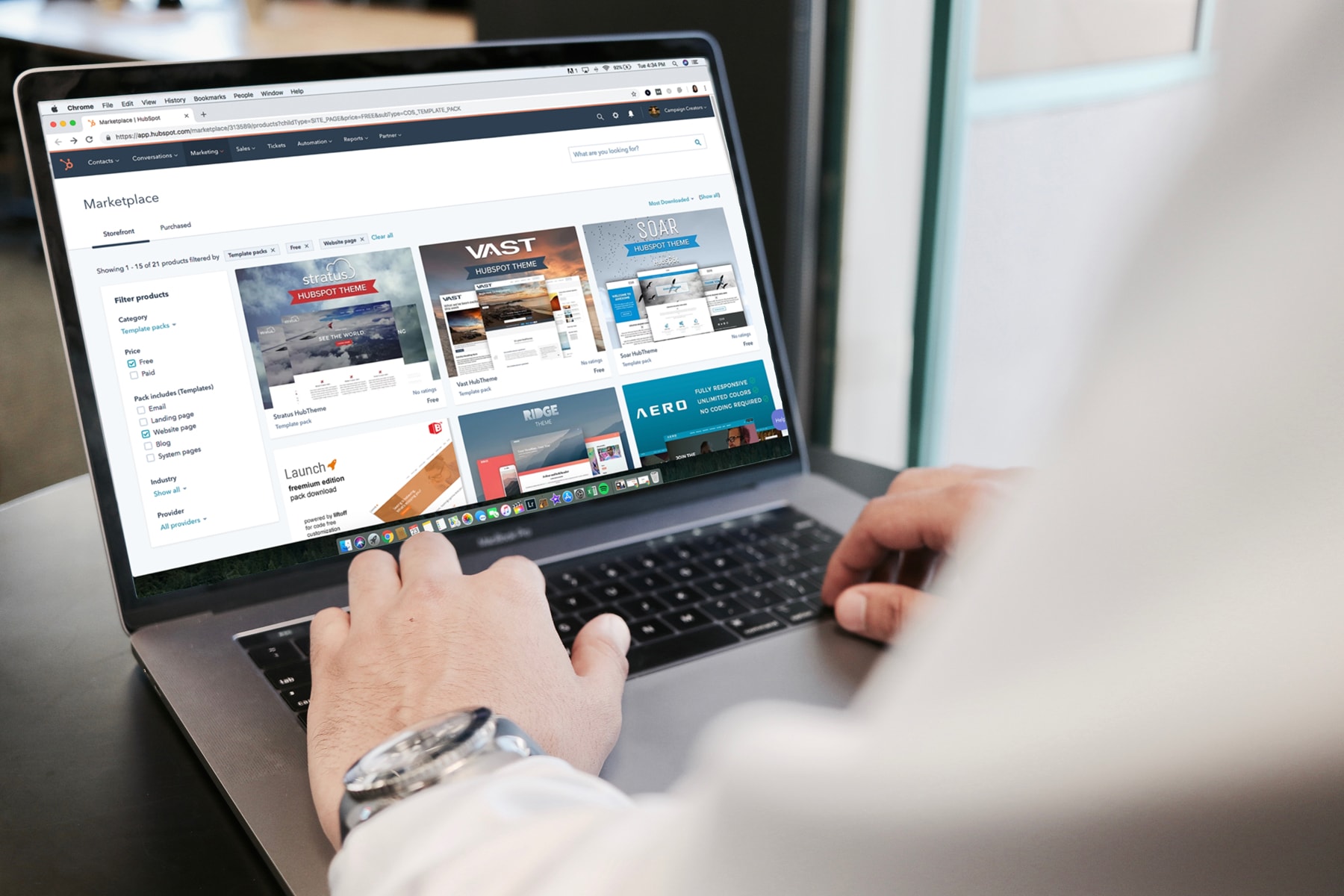Your complete guide to dropshipping
Find out what dropshipping is, how to start dropshipping, and how to find the right supplier.
.png)
What is dropshipping?
Dropshipping, broadly, is where instead of holding inventory yourself, you ship directly from the supplier to the customer.
How does dropshipping work?
Running a successful dropshipping operation typically consists of three basic steps:
Step #1
The manufacturer produces the products, like a travel mug, and sells them in bulk to suppliers and wholesalers.
Step #2
Retailers and e-commerce sellers find a supplier for a specific product type. The supplier or wholesaler and you then agree to work together. Suppliers normally specialize in a certain niche, making it easy to find the kind of products you need.
Step #3
The retailer creates online storefronts to market the products and enables consumers to purchase the products. You could sell via a site like eBay or your own website with an online storefront. Suppliers and wholesalers then take care of shipping the product to the consumer, not the retailer.
It is important to note that in the dropshipping process, you are deemed the seller of record (SoR) and seen as the seller of the product to the end consumer. You need to set the price, record the purchase as revenue, and pay the required sales tax for each sale.
Is dropshipping right for you?
Here are seven questions to ask yourself to help you assess if dropshipping is for you.
1. Do you want to focus on building your brand?
Although you can create a branded online experience, you will have less control over product quality, delivery experience, and the look of the final package or the unboxing experience.
2. Do you want control over product quality?
With dropshipping, you will have limited control over the quality of the items you sell on an ongoing basis.
Poor product quality can bring negative customer reviews and affect customer acquisition, brand loyalty, and returns. Make sure you check your supplier’s stock is up to scratch.
3. At what rate do you want to ship products?
E-commerce customers typically want fast delivery. However, many dropship suppliers are located overseas, and this can cause long delivery times due to international shipping.
It is important to review the standard shipping costs and delivery timeframes of suppliers to know what to expect and manage the expectations of consumers. Long delivery times might make your product less competitive in the market.
4. How much start-up funds do you have?
Dropshipping can be attractive if you want to get a business up and running while spending little on the stock. This is because this model can allow you to hold off on buying products until customers actually place orders.
5. How big a profit margin do you want?
Due to the low overheads and high competition, dropshipping sellers commonly offer their products at low prices with low-profit margins.
Offering a niche product in an unsaturated market is one way to overcome this challenge. You can find less competitive niches through market research.
6. How do you want to handle supply and inventory issues?
In this fulfillment model, you do not have control over the supply chain, and production issues might determine how many orders you can accept.
You can avoid disappointing your customers by sourcing products through multiple dropshipping services if you are willing to deal with the added complexity of logistics and fulfillment.
7. How do you plan to handle refunds, returns, and replacements?
Customer returns are a normal process of any e-commerce business, and the process can vary from straightforward to very complicated.
Let’s look at how to start your dropshipping business.
How to start dropshipping
As a dropshipping merchant, you can run your business remotely without keeping any product in stock. Setting up your store is not as challenging as it sounds, and we have included the basic steps on how to start dropshipping below.
Commit to starting a dropshipping business
Starting your dropshipping business will take significant commitment and a long-term perspective. Be realistic in your expectations about the investment required and the profit potential.
Investing time to get your business up and running will reduce the financial investment. You can still expect various expenses such as fees for your online store, suppliers, marketing, and business expenses, such as obtaining a tax ID, business accounts and local business licenses.
Choose a dropshipping business idea
The second step involves doing your market research. Coming up with validated products for dropshipping ideas is the hard part. You need to select and investigate your niches to see how profitable they can be and make your selection.
You can also use online tools such as Google Trends, Keywords Everywhere, and DSers order volume to test your dropshipping business ideas.
Do competitive research
Once you have an idea of what to sell, you need to look at who your competitors are. Some quick ways to conduct competitor research are to run a Google search, use competitor spy tools like Similarweb and Alexa, browse social media, and subscribe to competitors’ email lists.
This way you can learn everything about your top competitors, such as their websites, prices, marketing methods, product descriptions, and reputation.
Choose a dropshipping supplier
The next critical step is to select the supplier that will give you the high-quality service you need to grow. This step is so crucial that we have included a section on this later on.
Build your e-commerce store
Next, you need to create a drop shipping website that works similarly to an online store on an e-commerce platform, except that you manage your inventory with your third-party supplier.
Your e-commerce store will be the home where you send traffic, sell products, and process payments. You can open it on a selling platform like Shopify or as a stand-alone offering.
Selecting an existing platform, like Shopify dropshipping, allows you to sell in multiple online locations in many currencies, and you can easily manage products and accept payments.
Decide on a business structure
It is best to set up a legitimate business entity. The three commonly used structures are a sole proprietorship, limited liability company (LLC), or C corporation.
These options can vary by country, and it is best to consult with a lawyer to ensure that you select the option that best suits your needs and offers you the most liability protection and autonomy from personal finances and costs.
Get your finances in order
It is advisable to keep your business and personal finances separate, and one sure way to achieve this is by opening a business bank account in your company name.
Depending on where you live, you will need to collect and report all sales taxes on your sales. Make sure to understand and comply with the local laws and regulations regarding business licenses.
Market your dropshipping store
To launch your dropshipping business and stand out in your market, you will need to focus on marketing and advertising in building your dropshipping business plan.
Some marketing ideas include paid ads on Facebook, Instagram, and Google, and using influencer marketing options.
Analyze and improve your offering
During your planning, you need to create clear KPIs to reflect what success will look like for your store. You then need to create a data-informed analytics system to collect and track the information you need to assess your achievements against your KPIs.
Tools like Google Analytics and Search Console can help you measure search traffic over time and improve your search engine optimization (SEO) efforts. Many social media apps also produce reports to help you analyze your strategy to make sure it is working for your business.
Advantages of dropshipping
There are many benefits to running a dropshipping company, such as:
- Low start-up costs - no need to buy stock and small fees to start your business.
- Low overheads - minimal running expenses as you can run your dropshipping business from a laptop at home without purchasing inventory or managing a warehouse.
- No inventory holding - no inventory also means no need to coordinate freight, inventory tracking, and e-commerce shipping time and costs.
- Very little effort required - no need to monitor each sale, pack boxes and run to the post office. You can manage your business from anywhere with the right supplier.
- Wide selection of products to sell - no limit to range due to stockholding constraints. As long as your supplier stocks the item, you can list it.
- Easier to scale - your supplier has to do more work to deliver the products as sales grow. It frees you up to focus on growing your sales and delivering customer support.
Cons of dropshipping
As with all processes, there are some downsides to dropshipping as well.
- Small profit margins - selling price competitive individual units means that it will take you a lot longer to earn the same profit as a wholesaler.
- Many competitors - low start-up costs also means high competition with many dropshippers worldwide.
- Very limited supply chain control - you cannot control any delays, or the quality and source of materials by the manufacturer. You lack the visibility to track orders and forecast inventory issues.
- You own all supplier challenges - any issues your supplier might experience will directly affect you and your service to your consumers.
- Ineffective shipping - shipping from overseas can be expensive and comes with delivery delays, poor trackability, and tariffs and taxes that are different in each country.
- Unsupported fulfillment errors - the fulfillment status of orders is not transparent and you do not have a view of exact inventory counts. You will have to make amends with the consumer for any unfulfilled orders.
- Limited customization and branding - The supplier designs and brands the product to be dropshipped and you cannot create your own brand.
Best products for dropshipping
There are some products you should avoid when dropshipping to maintain a healthy and profitable dropshipping business. These products are prone to damage, returns, warranty issues, require specialized shipping conditions, or can put you at liability risk should they fail in any way.
- Fragile or very big products
- Products banned from advertising on Facebook
- Counterfeit and copyrighted products
- Potentially dangerous products
- Clothing and shoes
- Electronic products
Below are some product and niche product category ideas to consider when looking for your dropshipping product:
- Tote bags supporting a cause or charity
- Novelty t-shirts
- Funny coffee mugs
- Motivational bookmarks
- Inexpensive watches or jewelry
- Marketing merchandise (shirts, bags, mugs, pens, etc.)
- iPhone cases
- Camping gear
- Exercise equipment
How to choose a dropshipping supplier?
As a dropshipping seller, you enter into an agreement with a supplier, making you dependent on them for product quality, timely shipping, and even legal compliance. Choosing your dropshipping suppliers with care is vital to minimize any risks.
You need to ensure that the product quality and functions are indeed as advertised. Below are a few questions to ask before signing on to do business with a dropshipping supplier:
- How are products shipped, and do they provide you with a tracking number?
- Who is responsible for defects, and what are the return and warranty policies?
- How do they handle returns or damaged products?
- What is the return window for customers?
- How long does it take them to fulfill an order, from sale to delivery?
- How will you manage customer fulfillment questions and concerns?
- Do they offer fraud protection?
- Can you find reviews or references online?
- How much do you charge?
- Also, is there a handling fee?
- What is the billing process, and does it fit your cash flow?
- Do they insure orders?
- What are the supplier restocking fees?
These questions can help you understand a dropshipping agreement and the potential costs involved before you sign anything.
Some of the biggest dropshipping suppliers include Amazon dropshipping with their Fulfillment by Amazon program and the Aliexpress dropshipping center options.
Tips for a successful dropshipping business
According to top dropshippers, only ten to twenty percent of dropshipping businesses succeed. You, as the owner, determine the success of your dropshipping business.
Below are a few best practices to assist you in maximizing the success of your drop shipping business.
- Create a user-friendly e-commerce experience and a seamless process from ordering to delivery.
- Do your research and identify products that are marketable, easy to ship, and what is hard for people to find locally.
- Monitor the supplier service for deviations from the expected norm.
- Build a robust social media presence and email marketing campaigns coupled with following through on your promises to boost your online credibility.
Is dropshipping legal?
Dropshipping is a legal e-commerce fulfillment model used by many global retailers.
There are various registrations, licenses, and tax requirements you need to comply with to ensure that your e-commerce company is legal. You should consult a lawyer who specializes in these matters to ensure you comply with all relevant requirements, both in your country and those you operate across.
Is dropshipping worth it?
Dropshipping is a low-risk business model that can earn about fifty percent more profit compared to keeping your own inventory. You do not have the running costs like a wholesaler making it easier to become profitable.
The downside is that the return rates are low, and you need to do large volumes of business to remain profitable. You have expenses to cover, such as marketing, site maintenance, search engine optimization, sales order management, returns, and customer service.
Creating a successful dropshipping business
There are many success stories from entrepreneurs who started dropshipping as a side hobby and grew it into a full-time business and beyond. They planned properly and put in the work required to make it work.
Dropshipping is similar to launching any other new online product, bar a few exceptions, and can be a profitable add-on to a traditional e-commerce business model.








.jpeg)



.png)



.png)





.png)

.png)
.png)

.png)
